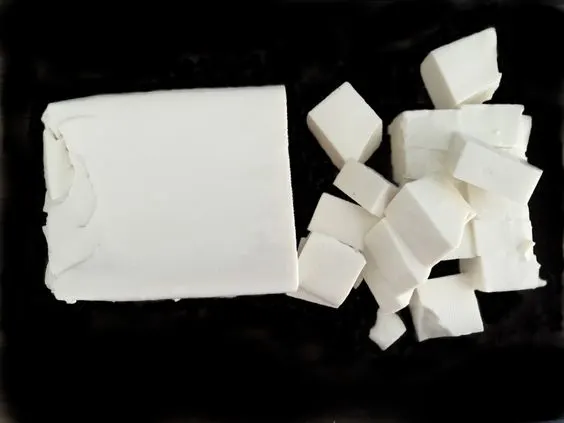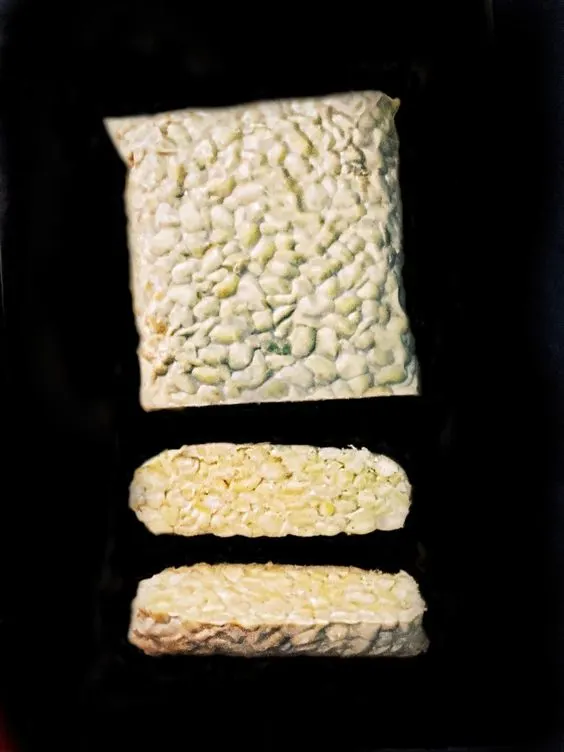Affiliate Disclosure: This post may contain some affiliate links, which means when you click, I get a small percentage of the purchase at no extra cost to you. This allows me to keep this website running, so feel free to click away! You can read my entire Affiliate Disclosure here.
One of the first things that you will probably want to do when you become a vegan is to find a way to make your food taste like what you were used to before. I know for the first couple of years I depended on fake meat products to make my meals delicious. One confusing aspect though is what fake meat products are the best. Some prefer tofu, some tempeh, and some seitan. Personally, seitan is my favorite. All of these fake meat products are different from each other, but what is the difference?
Tofu

Tofu is made from soybeans, water, and a coagulant, or thickening agent. Think about when you make almond milk; you know the leftover almond pulp? Tofu is mostly made from the pulp of the soybeans after soy milk has been made. The “pulp” is mixed with a coagulant. Tofu comes in block form and is often stored in water to prevent it from drying out. Silken or soft tofu and regular or firm tofu are the two types of tofu. Both types have a variety of textures (firm, extra firm, etc.) and can come in different formulations (raw, sprouted, organic, etc.). Always choose the organic version to avoid GMOs because 90% of the soy produced is genetically modified. Choose sprouted tofu if you want to up the nutrient content.
Tofu is high in protein, low in fat, and naturally cholesterol-free. Since tofu has an extremely mild taste, when added to recipes, it takes on the flavor profile of what you’re making. Silken tofu lends a
Try this oil-free tofu scramble.
This almond butter tofu stir-fry is delicious.
Tempeh

Tempeh is a brownish and more textured soy product that is made by fermenting cooked soybeans. It is made by a natural culturing and controlled fermentation process that binds soybeans into a cake form. Many commercially prepared brands add other grains, such as barley. Due to its fermentation, is it considered to be less health-controversial than tofu. Due to its fermentation process, its absorbability and digestibility are also increased. Tempeh has 18.2 grams of protein per serving, which is more than double the protein content of tofu. It also contains 10% of the RDA of both calcium and iron and is a naturally cholesterol-free food.
Tempeh is sold in many commercially-prepared varieties, including organic, sprouted, smoked, and with different grain and spice preparations. It is sold in long, flat rectangular cakes. It has a nutty taste that is unlike tofu and can be grilled, stir-fried, baked, and breaded. Even though it is firm, it still absorbs the flavors around it. As with tofu, be sure to purchase organic tempeh to avoid GMOs.
Try this vegan tempeh salad sandwich.
Seitan

Seitan is a textured wheat protein. It can be prepared by using either whole wheat flour or vital wheat gluten. Seitan is made by washing wheat flour dough with water until all the starch dissolves, leaving high-protein gluten behind. It is also called “wheat meat,” “wheat gluten,” or only “gluten” because it becomes surprisingly similar to the look and texture of meat when cooked. Unlike tofu and tempeh, it is not made from soy, so it is an excellent option if you’re trying to avoid or cut down on soy products. Avoid it all costs if you are following a gluten-free diet though.
Seitan is the most similar to the look and consistency of meat. It is brown in color and has a chewy texture. Like tofu and tempeh, it can take on whatever flavor you add to it. Seitan can be soft for slicing like lunchmeat, or it can be made firmer for a consistency that works with steaks. It is excellent grilled, baked, or pan-fried.
Because Seitan is made of pure gluten, it is protein and calorie-dense. A single serving of Seitan has 36 grams of protein, way higher than tofu and tempeh. It also has the highest composition of carbohydrates of the three.
Now that you know about all three of the most popular fake meat products on the market, it is time to pick your favorite.